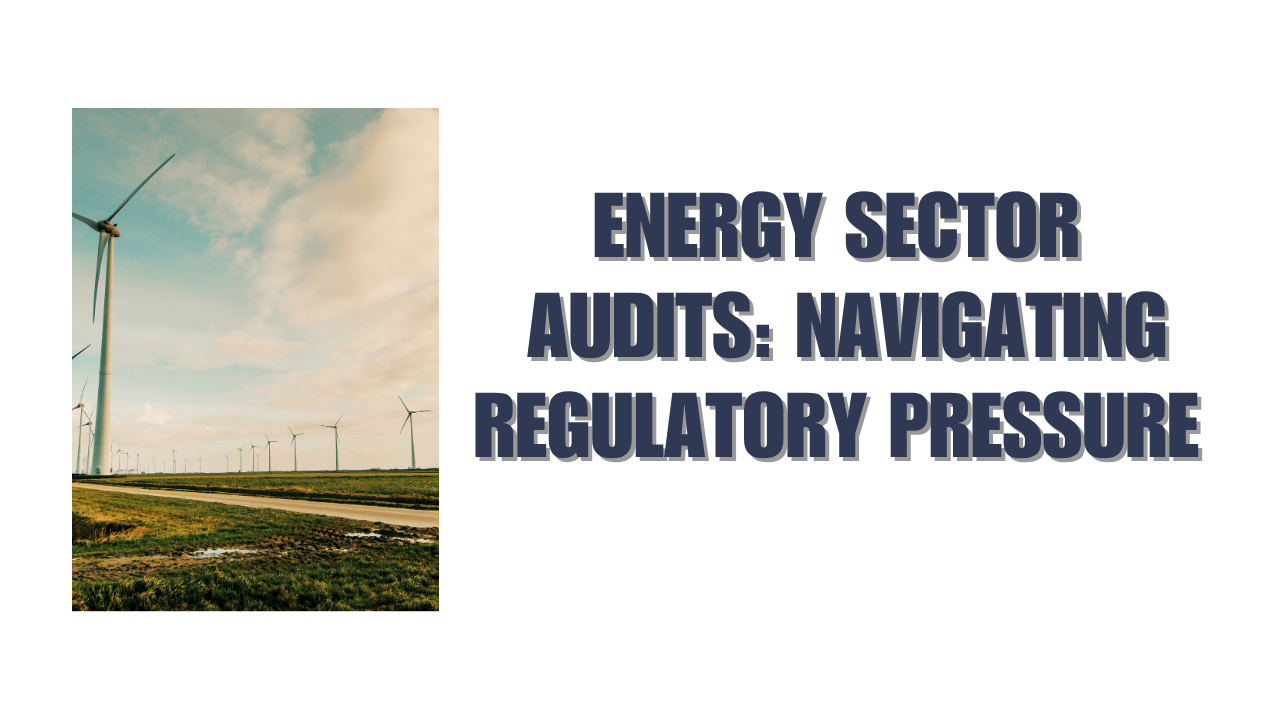Running a business today means constantly balancing efficiency, compliance, and strategy. No matter how strong a company’s financials look, hidden inefficiencies in daily operations can slow down growth, create unnecessary risks, and lead to wasted resources. That is why conducting an operational audit is a critical step for businesses that want to stay competitive and resilient.
Unlike financial audits that focus on numbers, an operational audit takes a close look at processes, systems, and people. It helps us identify where resources are being underused, where performance can improve, and where risks might emerge. When done correctly, it becomes less about finding faults and more about building a roadmap for stronger performance.
In this article, we will walk through the process of conducting an operational audit, highlight why it matters, and explain how it can create measurable value for any organization.
What is an Operational Audit?
An operational audit is a structured review of a company’s internal processes, controls, and procedures. The goal is to measure how well operations align with objectives, whether resources are being used efficiently, and if risks are being managed effectively.
It goes beyond compliance. While regulatory audits check if rules are followed, an operational audit asks deeper questions: Are our processes cost-effective? Is there duplication of work? Are we getting the maximum value out of our systems?
For example, in a manufacturing company, an operational audit may evaluate how raw materials move through the production line, whether bottlenecks are slowing down output, or if outdated systems are causing delays. In a service-based firm, it could examine client onboarding, response times, or how technology supports customer experience.
Simply put, it shines a spotlight on the “how” behind the business—how we work, how we use our resources, and how we can do better.
Why Do Businesses Need an Operational Audit?
Even well-managed companies develop inefficiencies over time. As teams grow, new systems are introduced, and markets shift, old processes may no longer fit current demands. This is where an operational audit proves its value.
The benefits include:
-
Improved efficiency: Identifying duplicated work, outdated tools, or unnecessary steps that waste time.
-
Better risk management: Detecting gaps in controls that could expose the business to financial loss or reputational harm.
-
Cost savings: Uncovering areas where spending can be reduced without hurting quality.
-
Stronger decision-making: Providing leaders with clear data and insights to support strategic choices.
-
Employee productivity: Streamlining processes so teams spend less time on low-value tasks.
Without this kind of review, businesses risk drifting into inefficiency, which often goes unnoticed until it directly impacts profits or customer satisfaction.
How to Conduct an Operational Audit
Carrying out an operational audit requires a structured approach. The goal is not just to collect data but to generate insights that lead to real improvements. Here’s how we can conduct one effectively:
1. Define the Objectives and Scope
The first step is to clearly outline why we are conducting the audit and what areas will be covered. Some businesses focus on specific departments such as supply chain or sales, while others may want a company-wide review.
For instance, a logistics company might set the objective of reducing delivery delays by 10%. The scope would include examining scheduling, vehicle use, and staff management. Setting clear objectives ensures the audit remains focused and measurable.
2. Collect Background Information
Before diving in, we need to understand the current processes. This involves reviewing policies, organizational charts, process flow documents, and past audit reports. Discussions with managers and staff are equally important, as they reveal how processes work in practice compared to how they appear on paper.
This stage creates a foundation for identifying gaps between planned processes and actual execution.
3. Assess Risks and Key Areas
Operational audits work best when they prioritize high-risk or high-value areas. For example, in a retail business, inventory management is critical because errors can directly affect profit margins. In healthcare, patient data security and process efficiency are vital due to regulatory and safety concerns.
By mapping risks, we ensure the audit focuses on areas where improvement will have the most impact.
4. Develop the Audit Plan
An audit plan acts like a blueprint. It outlines timelines, responsibilities, methods of data collection, and reporting formats. A well-designed plan ensures resources are used efficiently and everyone involved understands the process.
This plan should also clarify which methods will be used: process observation, data analysis, employee interviews, or system testing.
5. Gather Evidence
Evidence is at the heart of an audit. Depending on the scope, this could include:
-
Reviewing transaction records
-
Observing workflows in action
-
Interviewing staff at different levels
-
Analyzing system logs or reports
-
Benchmarking against industry best practices
The more varied the evidence, the more reliable the conclusions. Importantly, this stage should focus on both qualitative (observations, interviews) and quantitative (data, metrics) information.
6. Analyze Findings
Once evidence is collected, the next step is analysis. This means looking for trends, bottlenecks, or inconsistencies. For example, are processes taking longer than industry standards? Is there a recurring issue across different departments? Are resources being underutilized?
The analysis should connect findings back to the original objectives. If the goal was to improve turnaround time, then all insights should be tied to factors affecting speed and efficiency.
7. Report Results
The audit report is where findings are communicated to management. A strong report should be clear, practical, and solution-focused. Instead of just listing problems, it should explain root causes and recommend realistic improvements.
For example, instead of simply stating that “customer service response times are slow,” the report should explain why—perhaps outdated software or lack of training—and propose a clear solution.
8. Follow Up and Monitor
An operational audit does not end with the report. True value comes from implementing recommendations and tracking progress over time. This may involve setting up regular reviews, monitoring KPIs, or even running a follow-up audit to measure improvement.
By treating the audit as part of a continuous improvement cycle, businesses can ensure that the benefits are long-term rather than short-lived.
Best Practices for a Successful Operational Audit
While the steps provide a structure, there are some best practices that increase the effectiveness of an operational audit:
-
Stay objective: Auditors must remain impartial and avoid being influenced by internal pressures.
-
Engage employees: Staff cooperation is crucial, as they provide insights into day-to-day operations.
-
Communicate clearly: Management and staff should understand the purpose of the audit and how results will be used.
-
Focus on improvement: The goal is not to assign blame but to highlight opportunities for better performance.
-
Use benchmarks: Comparing processes against industry standards can provide valuable perspective.
These practices ensure the audit leads to constructive changes rather than resistance or confusion.
Challenges in Conducting an Operational Audit
Like any business activity, operational audits have challenges. Common issues include resistance from staff, limited access to reliable data, or unclear objectives from leadership. In some cases, organizations may struggle to implement recommendations because of budget constraints or competing priorities.
Overcoming these challenges requires strong leadership support, effective communication, and a commitment to continuous improvement. Businesses that embrace the process see it as a long-term investment in efficiency and resilience.
Conclusion
Conducting an operational audit is one of the most effective ways to identify inefficiencies, reduce risks, and align business operations with strategic goals. By following a structured process—defining objectives, gathering evidence, analyzing findings, and implementing improvements—we create a system where operations are not just functional but optimized.
Every business, regardless of size or industry, can benefit from taking a closer look at how it runs. An operational audit is not about fault-finding; it is about future-proofing. It gives us the clarity we need to streamline processes, strengthen performance, and ensure resources are used in the best possible way.
When we treat audits as a tool for growth rather than just compliance, we unlock their full potential.
FAQs
1. How often should an operational audit be conducted?
The frequency depends on the size and complexity of the business. For fast-changing industries, an annual audit is ideal. For more stable organizations, every two to three years may be sufficient. However, major changes such as new systems, mergers, or regulatory updates may warrant an earlier review. Regular audits help businesses stay proactive rather than reactive.
2. Who should conduct an operational audit?
Operational audits can be performed by an internal audit team or external professionals, depending on the company’s resources. Internal auditors bring familiarity with the business, while external auditors bring fresh perspective and impartiality. The choice often depends on the level of objectivity and expertise required.
3. What is the difference between an operational audit and a financial audit?
A financial audit examines the accuracy of financial statements and ensures compliance with accounting standards. An operational audit, on the other hand, looks at processes, efficiency, and risk management. Both are important, but the operational audit is broader, focusing on how well resources are being used to achieve goals rather than just the accuracy of numbers.






